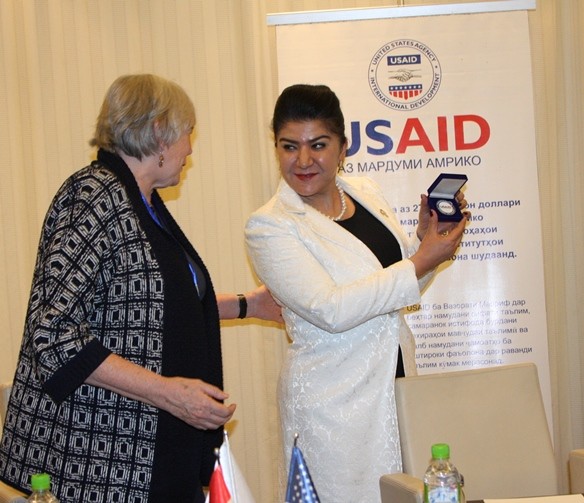
For Immediate Release
Dushanbe, Tajikistan, March 10-11, 2016 - The United States Agency for International Development (USAID) and the Global Alliance for Improved Nutrition (GAIN) hosted a workshop titled Cost Benefit Analysis of Flour Fortification in Tajikistan in Dushanbe. Deputy Speaker of the Lower Chamber of Parliament of Tajikistan Mrs. Khayrinisso Yusufi, USAID/Tajikistan Country Director Ms. Katie McDonald, First Deputy Minister of Health and Social Protection of Population Mrs. Saida Umarzoda, and Mrs. Dora Panagides, Senior Manager, Large-Scale Food Fortification/GAIN delivered remarks to open the workshop.
Micronutrient malnutrition is a significant challenge in Tajikistan. 24 percent of women of reproductive age and 29 percent of children under five suffer from anemia due to iron deficiency. This condition and other micronutrient deficiencies, including neurological conditions due to folate deficiency, have far-reaching consequences for the health and economic prosperity of the country. The Government of Tajikistan sought a more robust analysis to determine if flour fortification is a cost effective measure to address iron and folic acid deficiencies.
Workshop participants and key stakeholders engaged in discourse to collect, confirm and agree upon key data to be entered into a cost-benefit model to assess the cost effectiveness of flour fortification in Tajikistan. They then used the model to calculate the economic losses of micronutrient deficiencies in Tajikistan.
Fortification, addition of a small amount of micronutrients to flour, is a proven approach to reduce micronutrient deficiencies that has been established in countries the world over. It is cost effective, covers a high percentage of the population if implemented correctly, and has been tested in many rigorous studies.
After workshop participants reviewed and agreed to the inputs, the final model projected that: 1) the economic cost of doing nothing to address micronutrient deficiencies over ten years would be $1,124 million; and 2) a national wheat flour fortification program will cost $26.5 million and will reduce the economic cost of nutrient deficiencies by $314 million over ten years. The cost-benefit analysis clearly demonstrated that the economic cost of micronutrient deficiencies is far greater than the cost of wheat flour fortification.







Comment
Make a general inquiry or suggest an improvement.